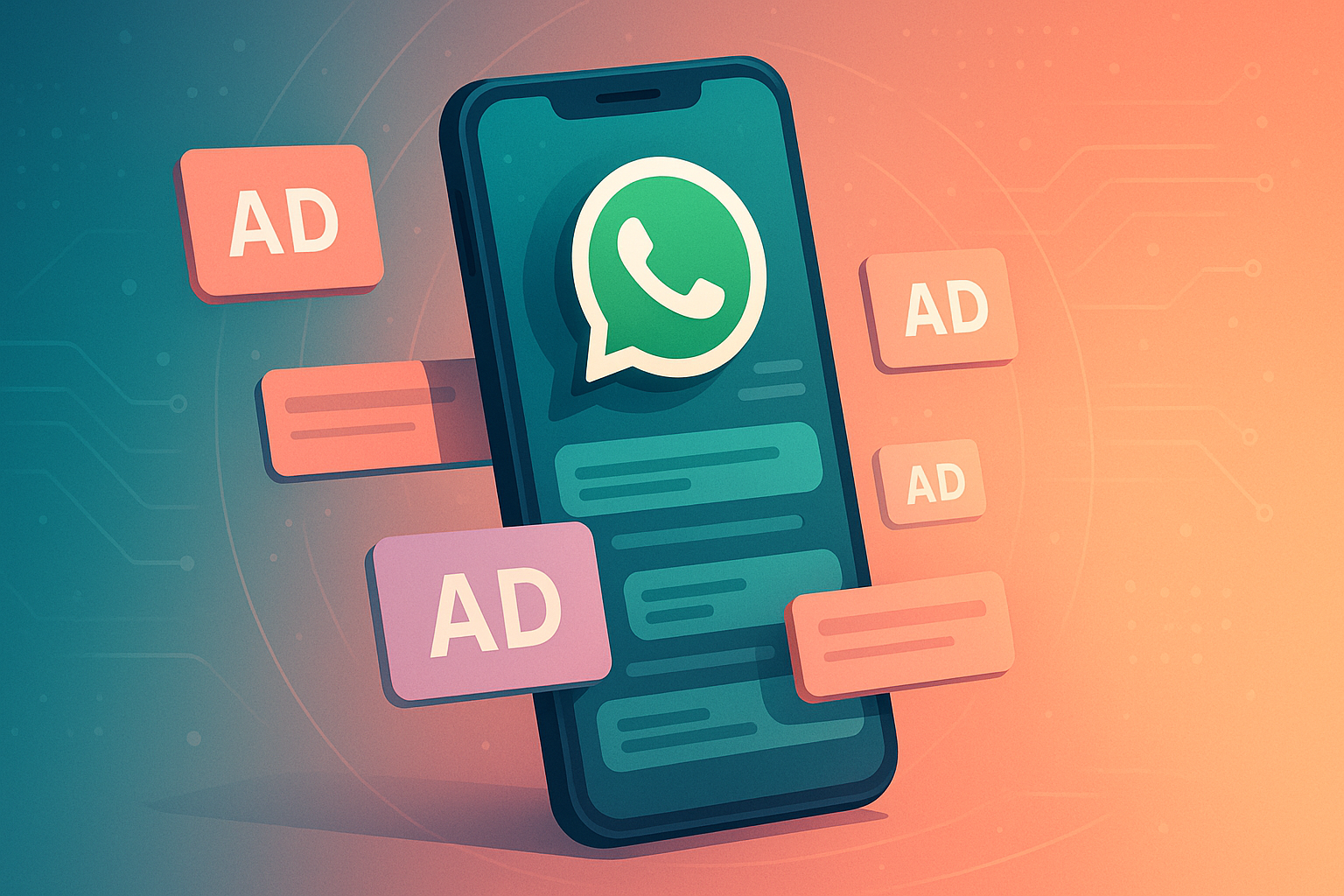After 11 years of staying ad-free, WhatsApp is finally giving in. Meta (formerly Facebook) confirmed on June 16, 2025 that WhatsApp will start showing ads in its Updates tab. This marks a major shift for the messaging platform used by over 2 billion people worldwide. The change will affect how marketers can reach WhatsApp’s massive audience while maintaining the privacy of personal conversations.
Key Takeaways
- Ads will only appear in the Updates tab (Status screen), not in private chats, which remain end-to-end encrypted and ad-free
- Businesses can create WhatsApp ads through Meta’s Ads Manager, similar to Facebook and Instagram campaigns
- New monetization features include channel subscriptions starting at $2.99/month and promoted channels using Meta’s “Project Lighthouse” recommendation engine
The End of a Promise
WhatsApp’s founders once strongly opposed ads. Jan Koum and Brian Acton wrote in 2012: “No one jumps up from a nap and runs to see an advertisement.” That stance is now history. After Meta’s $19 billion acquisition, the platform is finally embracing advertising as a revenue stream.
The changes are strategic. Ads will only appear between Status updates in the Updates tab – an area visited by an estimated 1.5 billion users daily. Your private chats stay untouched. No ads will interrupt your conversations or group chats, and end-to-end encryption remains intact.
What This Means for Users and Marketers
For everyday users, the impact depends on how often you check Status updates. Don’t use that feature? You’ll never see an ad. Simple.
For marketers, this is huge. WhatsApp’s massive global audience is finally accessible through Meta’s familiar Ads Manager. Campaigns can now span Facebook, Instagram, and WhatsApp from a single dashboard. Ad frequency will vary based on how actively users engage with the Updates tab.
Beyond basic ads, Meta is rolling out channel subscriptions. Creators and businesses can now charge users $2.99/month or more for premium content using secure SHA-256 encrypted payments. The platform will also feature promoted channels, using an algorithm called Project Lighthouse that considers your location, language, and interaction patterns.
Privacy and Technical Details
WhatsApp is trying to walk a tightrope between monetization and privacy. Ads won’t use your phone number, messages, or group data for targeting. Instead, they’ll use broader signals like country, city, language, and which channels you follow – similar to how Facebook and Instagram ads work.
Not comfortable with that? You can opt out of personalized ads through Settings > Privacy > Ad Preferences.
The global rollout begins July 2025. Developers will get early access, followed by a phased release to all users. Meta appears to be testing the waters carefully, likely anticipating pushback from longtime users who valued WhatsApp’s ad-free experience.
This move aligns with broader industry trends as messaging platforms seek profitable business models. For WhatsApp, which has largely avoided monetization since its acquisition, ads represent a significant pivot away from its founders’ original vision. Whether users will accept this new reality or seek alternatives remains to be seen.


